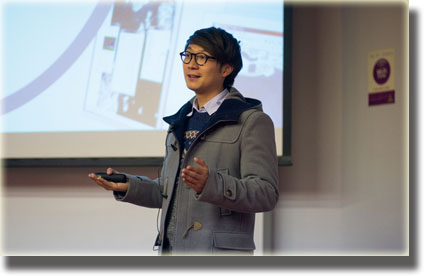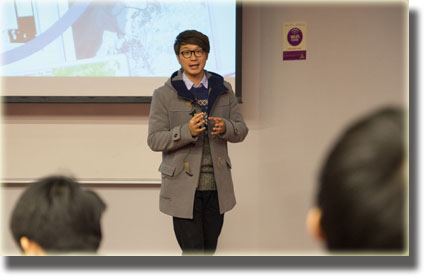Teaching Philosophy
I am truly honoured to receive the Exemplary Teaching Award in General Education. The General Education course titled Earth as Seen from Space was passed to me in 2011. I modified the course structure and content to make it more interactive with the students. Thus, not only is this award meaningful to me, but also recognizes the collective effort of colleagues in my department.
One of the goals of General Education is to help students jump out of their comfort zone and to learn subjects they are unfamiliar with, in which they somehow show a certain degree of interests. It is this little seed of curiosity that can be cultivated and blossomed into sustained motivation to learn. My strategy is to simply make the class interesting and to engage students in class through course design, in-class activity and innovative way of presentation.

Earth journey in the space is about the science of remote sensing. The subject seems unfamiliar to most people, not only students. I implant a lot of real life examples in course contents to demonstrate science is essentially everyday experiences. Starting from daily and personal encounters of a digital alarm clock waking one up in the morning; Google Map that guides one to identify the shortest path to a Michelin star restaurant; whether rain will come in the next couple of hours; tightknit plots in movies like Gravity; to global events of locating the debris of missing MH370 in the ocean and tracking the flow of volcanic ashes disturbing the air traffic. All these are prevalent to satellites which seem too far away but are in fact keeping an eye on us high up in the space. Using examples connecting to their daily experiences, students' attention can be drawn and interests in the subject aroused. Most importantly, they would become aware of and start to be able to appreciate the presence of the influence of science and technology in their life, the society and even the world.
"Concepts lead the way; applications as showcases" is how the course is designed. Theoretical concepts of remote sensing are introduced in the first half of the course, and real-life applications focusing on how remote sensing is implemented in our society follow. In fact, the technology connects people's life in many aspects. Students are encouraged to study the subject from different perspectives such as issues of practicability, technical and environmental considerations, etc. Through these examples and discussions, students are trained to think more critically.

'Seeing' from space is not enough, decoding messages from space is equally important. These messages are presented through images. The course emphasizes on developing skills to extract information from images, which is indeed a practice-make-perfect exercise. Other than traditional tutorial classes in which students can learn to cooperate and communicate with each other, an in-class game known as "Image of the Week" is designed to engage students throughout the learning process. The game is carried out in every lecture during the break and is facilitated by the student response system built in the classrooms. Students use their mobile phones, laptops or tablets to immediately respond to the preset questions in class. Designed as a game, students are not respectively graded and they are encouraged to use the skills they learnt in the course to tackle the questions. After the game, the correct answers are explained and the students will learn the analytical skills involved. The cumulative experiences and sharpened skills make them more confident in the ensuing 'game'.

Quality teaching and learning experience in class would be affected by how content materials are presented and delivered to the students. The key ingredients are technology plus a bit of humor. Technology allows lecture contents to be delivered in a more creative and innovative way using well-designed graphics and animations which capture students' attention in class. I present course contents in the form of a mind map which is effective in organizing thoughts and communicating ideas. While the contents can be discussed in depth, the linkages among different topics, as well as the whole picture, will not be lost. A bit of humor does ice-breaking and helps make the class more interesting.
The earth is mysterious; satellites reveal the unknowns to human-beings by capturing images from the space. Knowledge is limitless; teachers unveil the key to acquire knowledge by motivating students to learn with fun. On one hand, the journey from the space lets students know more about the earth. On the other hand, I hope students can endure the momentum to learn and use their knowledge to contribute to our homeland.
|


